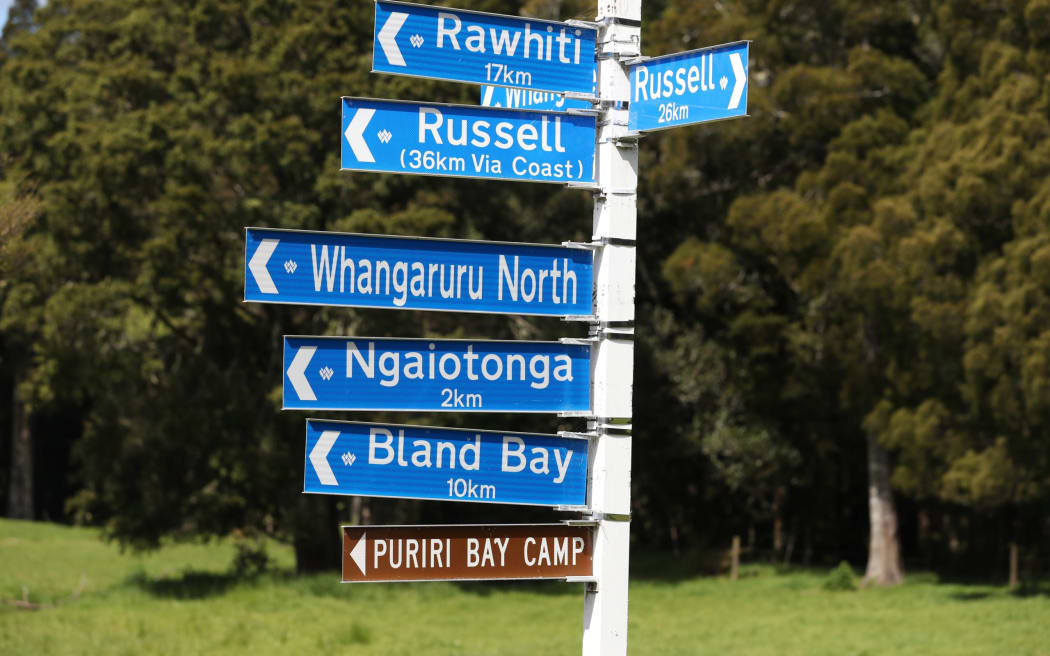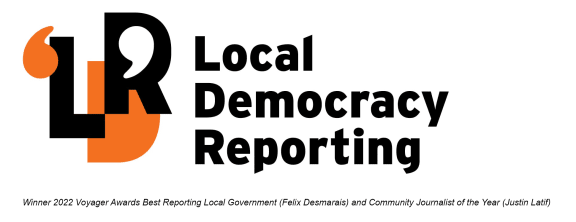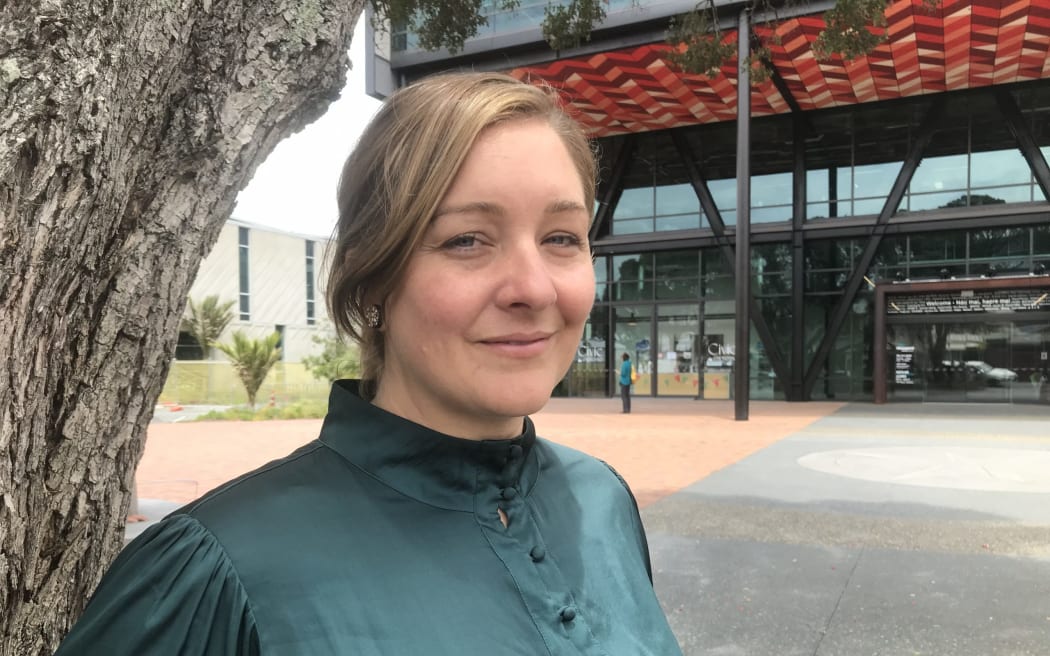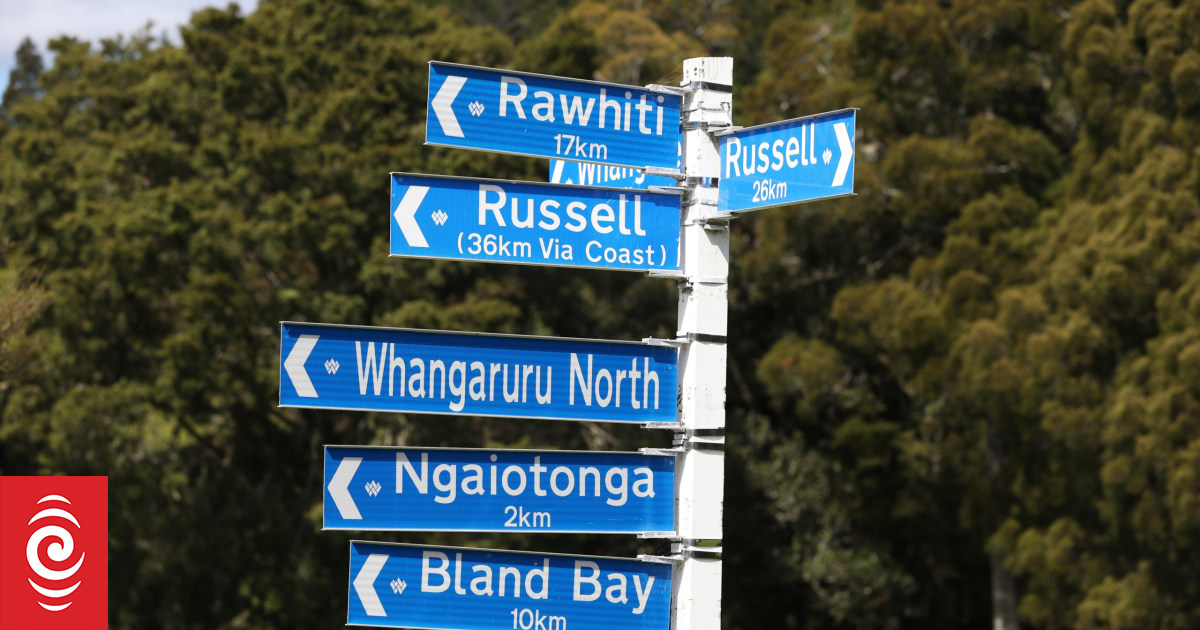
Road signage in the Oakura coastal catchment.
Photo: LDR / Michael Cunningham
New Zealand’s newest community climate adaptation pilot has just emerged around Oakura district on Whangārei’s northern coast.
The Oakura coastal catchment pilot was formally signed off at Whangārei District Council (WDC)’s final meeting of the year last week. It covers the 165 square kilometre Oakura River coastal catchment.
Its coastline runs roughly from Bland Bay in the north of Whangārei district to Mimiwhangata in the south.
The pilot includes three marae. Its main settlements include Whangaruru, Oakura and Helena Bay.

WDC programme manager climate change adaptation Kylie Pedersen said the new community-led pilot was exciting.
She said it was about working with the community to facilitate them in their journey to build resilience in the face of climate change-influenced issues.
These included regular flooding at Punaruku and coastal erosion at beach communities such as Teal Bay.

Whangārei District Council programme manager climate change adaptation Kylie Pedersen.
Photo: LDR / Susan Botting
“The goal of climate change adaptation is to reduce the vulnerability of the community to the harmful effects of climate change such as more intense extreme weather patterns,” Pedersen said.
“We want to work with the community to better understand what is most important for them and figure out together how we adapt to our changing climate”.
The pilot is a continuation of Whangārei’s climate adaptation work started in 2018.
In 2019, the district council joined 17 regional and local councils across New Zealand in declaring a climate emergency.
The pilot area covers coastal holiday communities, tangata whenua marae, farming and other land uses.

Teal Bay, one of the coastal communities in the new Oakura coastal catchment climate adaptation pilot.
Photo: LDR / Susan Botting
Community climate adaptation typically starts with the community identifying local impacts. The various triggers at which different sectors would choose to take action are then jointly worked out. The community then works through what actions to take to address those triggers.
Councillor Scott Mckenzie, who is a WDC representative on Northland’s inter-council governance-level joint climate adaptation committee, said the new pilot was the result of collective background work by Northland’s four councils.
McKenzie said the pilot was about communities working through how to adapt to climate change in a way that worked for them.
Pedersen is part of the region’s cross-council staff-level climate adaptation Te Tai Tokerau (CATT) group. This works closely to ensure Northland’s mahi in this area is collaborative and shares learnings.
The new Whangārei pilot has been built on the shoulders of learnings from the region’s first community climate adaptation project in Ruawai, which began in December 2021.
The Ruawai pilot was chosen by Northland’s four councils as the first site for the region’s community climate adaptation work, but has recently been “paused” by Kaipara District Council (KDC), half-way through its three-year process – in spite of the community calling for its continuation.
Ruawai was New Zealand’s first mahi of its type on a drainage scheme area.
Ongoing flooding around Punaruku is one climate change challenged feature of the new pilot’s catchment area. Russell Road is the area’s single main route in and out. Flooding often closes this road, impacting children trying to get to the local school and more.
Pedersen said communities had a critical role in adaptation decision making. People from within the new pilot had already been asking for climate resilience assistance.
She said the pilot would help inform subsequent Whangārei District efforts to address climate change.
Northland Regional Council is working with WDC in support of the new pilot.
Meanwhile, the Far North District Council (FNDC) is close to selecting its first community climate change adaptation pilot in the first half of 2024.
FNDC’s website said climate change was already impacting moana and coastlines.
“Over the next 30 years sea levels are projected to further increase by 35cm and ocean temperatures by one degree centigrade,” it said.
“Communities will need to make decisions on how they adapt to coastal hazards like permanent sea level rise, coastal flooding and inundation. In doing so they will need to consider what is at risk and how to adapt.”
Local Democracy Reporting is Public Interest Journalism funded through NZ On Air.



